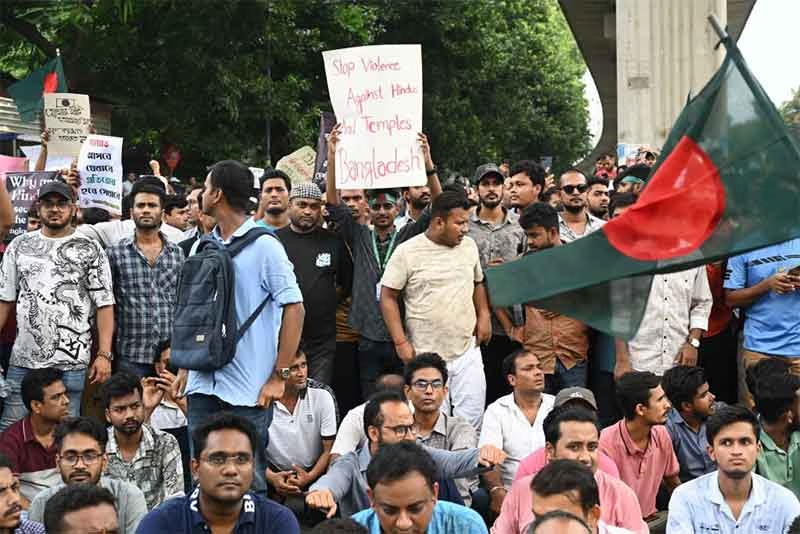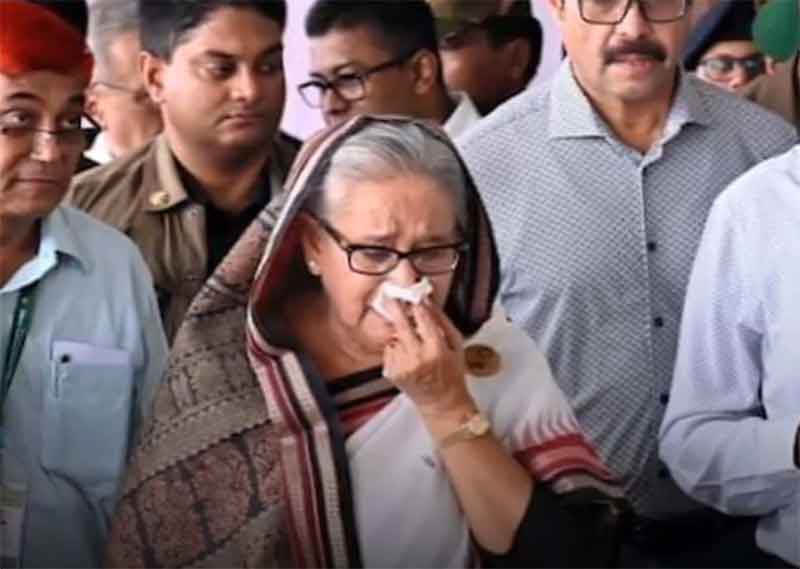
In December 2024, we witnessed India’s strong protest against Yunus cabinet advisor Mahfuj Alam’s Facebook post, which showed a map of undivided Bengal, referring to regions that are part of India today, including West Bengal, Assam, Tripura, and Manipur. In December 2024, India protested against a Facebook post by Yunus cabinet advisor Mahfuj Alam that showed a map of Bengal that included parts of India today, such as West Bengal, Assam, Tripura, and Manipur. This is not the end, and only such tweeting from elements within – loyal to the Yunus ideology, are allowed on Bangladsh side. One such repeating tweet is their voice for going back to the 1947 political arrangement. Well! Let me examine the incidents concerning 1947.
Husseyin Shahid Suhrawardy, Sarat Chandra Bose, and several other prominent political leaders reopened negotiations for a separate, independent, united Bengal. In March 1947, Louis Mountbatten became the last viceroy of British India, with a mandate to transfer powers. It is to be noted that Mountbatten was not against the idea, but Mahatma Gandhi and the Congress Party opposed it. When British colonial rule ended in August 1947, two new countries—India and Pakistan—were born. Bengal was split between these two newly born states. West Bengal went to India, and East Bengal formed the eastern wing of Pakistan. I want to remind you, if you want to return to the 1947 political arrangement, you have to accept its possible consequences. In this context, let me focus on the Liaquat-Nehru Treaty 1950 and the Indira-Mujib Treaty 1972.
The Liaquat–Nehru Pact was a bilateral treaty between India and Pakistan in which refugees were allowed to return to dispose of their property. Abducted women and looted property were to be returned, forced conversions were unrecognized, and minority rights were confirmed. The treaty was signed in New Delhi by the Prime Minister of India Jawahar Lal Nehru and the Prime Minister of Pakistan Liaquat Ali Khan in April 1950. The purpose of this pact was to avert war between the two neighboring nations and to guarantee the rights of minorities in both countries. The treaty also introduced a visa system for refugees and restricted free passage of refugees across the border. Minority commissions were set up in both countries. More than one million refugees migrated from East Pakistan (now Bangladesh) to West Bengal in India.
Indian Prime Minister Indira Gandhi and Bangladeshi Prime Minister Bangabandhu Sheikh Mujibur Rahman signed the India–Bangladesh Treaty of Friendship, Cooperation, and Peace. It was a 25-year treaty that was signed in Dhaka in March 1972, forging close bilateral relations between the two neighboring countries. This treaty was used as an excuse to antagonize Bangabandhu Sheikh Mujib by many in politics. After the tragic assassination of Bangabandhu in 1975, it led to the emergence of military regimes. This led to a distancing from India. Following the Indira-Mujib treaty, refugees, Hindu or Muslim, who migrated from East Pakistan to India before 1970 were not allowed to return to Bangladesh.
Bangabandhu’s tragic death led to open diplomatic relations with Pakistan and other nations that had opposed the creation of Bangladesh, such as Saudi Arabia and China. After 1975, for decades, Bangladesh was criticized for allowing Indian secessionist groups such as the United Liberation Front of Assam (ULFA) to have bases on her territory and suspected links with Pakistani intelligence agencies. Bangladesh, in turn, alleged that India was supporting the Shanti Bahini insurgency in the Chittagong Hill Tracts. As a result, the Indira-Mujib treaty could not be renewed after the first tenure’s expiry in 1997.
At this stage, let me focus on the facts regarding Hindu minority people in East Bengal or Bangladesh. In 1947, we had 30 percent Hindu community people. It narrowed to 20 percent over 24 years. This 20 percent recorded in 1972 narrowed to 7 or 11 percent over five decades according to the statistics of 2024. Even after the Land Boundary or enclave agreement signed by Sheikh Hasina and Narendra Modi in 2015, only 56 individuals from the Muslim community in India migrated to Bangladesh. On the other hand, 921 people from both Hindu and Muslim families migrated to India.
If we look back to the realities after the political turmoil in Bangladesh in August 2024, people fled despite the border being sealed by the Indian authorities. In fact, Narendra Modi did favor Muhammad Yunus to protect Peace Nobel laureate’s face and mask together. If the border was opened, Bangladesh could have turned to be almost a minority-free country. Then Yunus would not have any way to hide his desperate failure.
Still, we witness cabinet individuals like Mahfuj or other elements undermining all those historical milestones in spirit line with the Independence of our nation in 1971. But why? Are you dreaming of going back to the pre-1971 era? Are you ready then to abide by the 1950 Liaquat-Nehru pact and bring back the refugees who migrated to India and others up to 1970?
Subscribe to Our Newsletter
Get the latest CounterCurrents updates delivered straight to your inbox.
Anisur Rahman is a Bangladeshi-Swedish poet, playwright, journalist, and literary critic whose work intersects with radical politics, cultural resistance, and transnational solidarity. A prolific author of diverse literary works spanning poetry, novels, short stories, essays, and translations. Anisur’s work bridges Bengali and Scandinavian literary traditions. His writings—translated into 20+ languages, including English, Swedish, Hindi, Assamese and Arabic—critique authoritarianism, censorship, and the erosion of secularism in Bangladesh, themes central to his 2024 analysis of the post-Hasina regime’s destruction of cultural institutions
















































